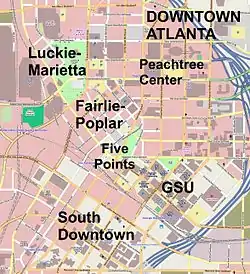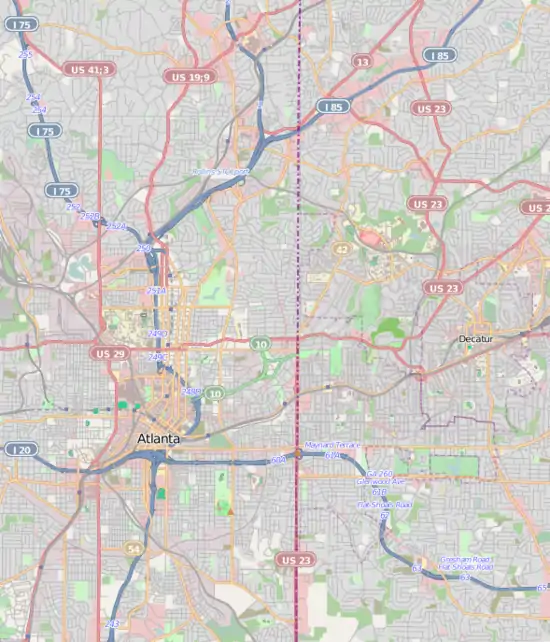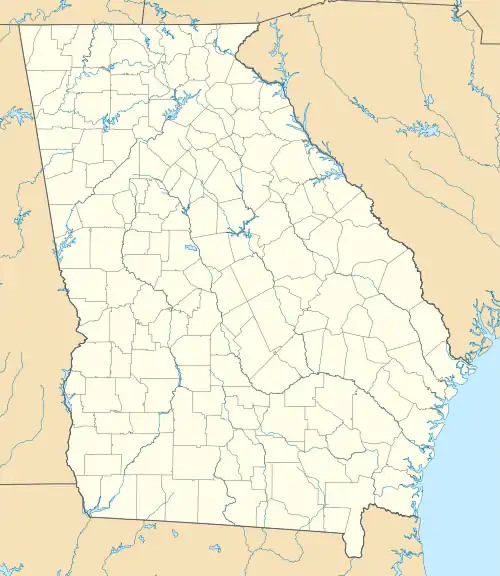First Congregational Church (Atlanta)
First Congregational Church (First Church; United Church of Christ) is a United Church of Christ church located in downtown Atlanta at the corner of Courtland Street and John Wesley Dobbs Avenue (formerly Houston Street). It is notable for being the favored church of the city's black elite including Alonzo Herndon and Andrew Young, for its famous minister Henry H. Proctor, and for President Taft having visited in 1898.[2]
First Congregational Church | |
 First Congregational Church (2012) | |
    | |
| Location | 105 Courtland St., NE, Atlanta, Georgia |
|---|---|
| Coordinates | 33°45′27″N 84°23′1″W |
| Area | less than one acre |
| Built | 1908 |
| Built by | Robert E. Pharrow |
| Architect | Alexander Campbell Bruce, Arthur Greene Everett |
| Architectural style | Renaissance |
| NRHP reference No. | 79000720[1] |
| Significant dates | |
| Added to NRHP | January 19, 1979 |
| Designated ALB | October 23, 1989 |
The church is the second-oldest African-American Congregational Church in the United States. The American Missionary Association (AMA) established the Storrs School in Atlanta. The school served as a center for social services, education, and worship for newly freed blacks. Worshipers at the school's services petitioned for a church of their own. As a result, in May 1867 a Congregational Church was organized,[3] and the AMA donated the land.
The church was never formally segregated but had become mostly black by 1892. The current building is the second church, built on the site of the original one in 1908.[4]
External links
![]() Media related to First Congregational Church (Atlanta) at Wikimedia Commons
Media related to First Congregational Church (Atlanta) at Wikimedia Commons
References
- "National Register Information System". National Register of Historic Places. National Park Service. July 9, 2010.
- Graham, L.O. (2009). Our Kind of People: Inside America's Black Upper Class. HarperCollins. ISBN 9780061870811. Retrieved September 29, 2016.
- "First Congregational Church, U.C.C., Atlanta, Georgia records". Auburn Avenue Research Library site. aafa.galileo.usg.edu. Retrieved September 29, 2016.
- ""First Congregational Church", Atlanta History Center website". Archived from the original on September 26, 2013. Retrieved September 21, 2013.